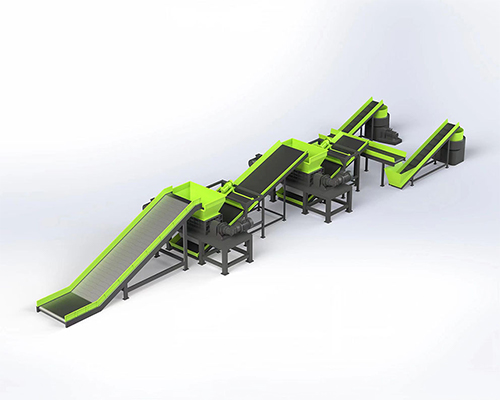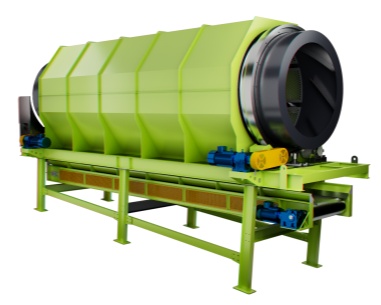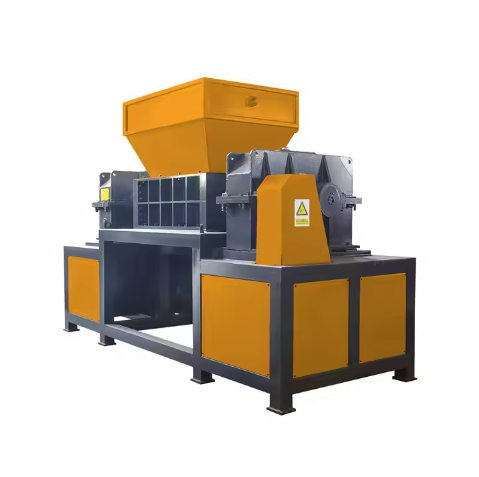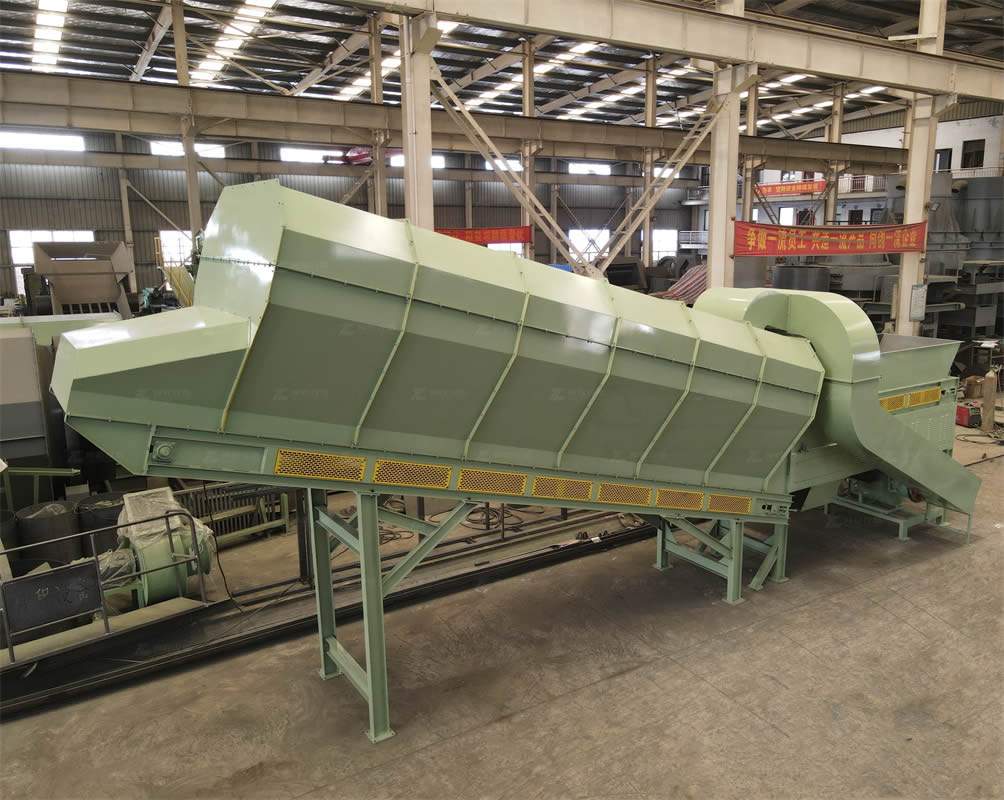building a site for a twin-shaft shredder
When building a site for a twin-shaft shredder, several factors need to be considered to ensure that the machine can operate safely and efficiently. Here are some suggestions and steps:

Site selection:
The site should be large enough to accommodate the shredder and its auxiliary equipment (such as conveyor belts, separators, etc.).
A flat and solid foundation should be selected, and soft soil or places prone to water accumulation should be avoided.
Infrastructure:
Power supply: According to the power requirements of the shredder, install a suitable power system, including transformers, distribution cabinets, etc.
Water supply and drainage: If there is a cooling or cleaning requirement during the shredding process, it is necessary to plan the water supply system and design an effective drainage system.
Ventilation and exhaust: To prevent the accumulation of dust and harmful gases, good ventilation facilities need to be set up.
Environmental protection measures:
Install dust reduction devices, such as spray dust suppression systems, to reduce dust generated during operation.
Control noise, and reduce the impact of noise on the surrounding environment through soundproof walls or other means.
Safety protection:
Set up an emergency stop button and ensure that all operators can easily reach it.
Set up protective railings around the machine to prevent non-staff from approaching dangerous areas.
Provide operators with necessary personal protective equipment (PPE), such as earplugs, masks, gloves, etc.
Logistics arrangements:
Plan the material access channels to ensure that transport vehicles can arrive and leave smoothly.
If necessary, set up a temporary storage area for stacking materials to be processed or finished products.
Maintenance space:
Leave enough repair and maintenance space for future inspection and maintenance of equipment.
Comply with regulations:
Ensure that the entire construction process and subsequent operations comply with local environmental protection, safety and other relevant laws and regulations.
Before starting construction, it is best to consult professional engineers or suppliers who can provide more detailed design plans and suggestions based on the specific model of the double-shaft shredder. In addition, it is necessary to consider possible future development and expansion, and reserve a certain amount of space and room for development.
| Model | 600 | 800 | 1000 | 1200 | 1400 | 1600 | 1800 |
| Motor(kw) | 11*2 | 18.5*2 | 35*2 | 45*2 | 55*2 | 75*2 | 110*2 |
Reducer | P6-P7 | P7-P8 | P8-P10 | P10-P12 | P11-P13 | P12-P16 | P14-P16 |
| Siemens or other motors, planetary reducers or other reducers can be customized according to customer requirements | |||||||
| Rotation Speed | 8-20rmp | 8-20rmp | 8-15rmp | 8-15rmp | 8-15rmp | 8-12rmp | 8-12rmp |
| Blades Diameter | 220-320 | 260-320 | 260-400 | 400-500 | 400-500 | 500 | 500 |
| Blades material | The material of the blades (55sicr, 5crsi, 9crsi, skd11, m6v, h13) can be customizedaccording to the customer's actual usage | ||||||
| Feeding Size | 1200*900mm | 1400*1000mm | 1600*1200mm | 1800*1300mm | 2000*1300mm | 2200*1700mm | 2400*2000mm |
| The size and appearance of the feeding hopper can be customized according to thecustomer's feeding situation | |||||||
| Weight(kg) | 1800 | 2500 | 3700 | 5500 | 7500 | 9500 | 13000 |
-
 Trommel screenTrommel screen, also known as drum screens, are widely used in various industries for sorting and separating materials.Get Quote
Trommel screenTrommel screen, also known as drum screens, are widely used in various industries for sorting and separating materials.Get Quote -
 Crop straw double shaft shreddApplications:Biomass Energy Production: Shredded straw can be used as a feedstock for bioenergy plants to produce electricity or heat.Livestock Feed: Reduced-si...Get Quote
Crop straw double shaft shreddApplications:Biomass Energy Production: Shredded straw can be used as a feedstock for bioenergy plants to produce electricity or heat.Livestock Feed: Reduced-si...Get Quote -
 Zhongcheng Air Drum SeparatorAir drum separators effectively separate lightweight materials (e.g., plastics, paper) from heavier materials (e.g., metals, glass). This high efficiency is cru...Get Quote
Zhongcheng Air Drum SeparatorAir drum separators effectively separate lightweight materials (e.g., plastics, paper) from heavier materials (e.g., metals, glass). This high efficiency is cru...Get Quote
-
2024-10-23Solid waste recycling plantOur company engaged in waste sorting system . We are professional about waste sorting system . We have professional technical team. Professional technical team...
-
2023-01-12Disc ScreenDisc screen, also known as a disc scalping screen, is a mechanical device used to separate materials based on size. It is commonly used in industries such as wa...
-
2023-01-12Impact CrusherImpact crusher is a type of machine designed to reduce large rocks, ores, and other hard materials into smaller, more manageable pieces. This equipment is widel...
-
2024-08-12Wood Pallet ShredderConsiderations When Choosing a Wood Pallet Shredder:Material Type: Different wood types may require specific configurations or materials of construction.Output ...
-
2024-08-28Scrap rubber product shredderThe shredder of waste rubber products not only helps to reduce environmental pollution, but also improves the reuse rate of waste rubber, which is one of the im...



